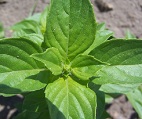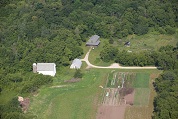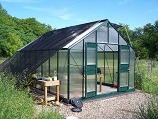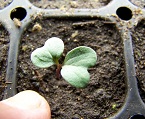The Weblog

…from Farm Where Life is Good
We’ll give you an insider’s view of life and growing on the farm. Share the excitement of a great harvest and experience the disappointment of a crop failure.
We have it all!
Online Market is OPEN for Business (Week 48) *Pre-Thanksgiving Delivery*
This post expired on November 24, 2023.
The winter FarmWLIG fields
Life on the Farm (Week 48)
By James Whitcomb Riley (1849–1916)
When the frost is on the punkin and the fodder’s in the shock,
And you hear the kyouck and gobble of the struttin’ turkey-cock,
And the clackin’ of the guineys, and the cluckin’ of the hens,
And the rooster’s hallylooyer as he tiptoes on the fence;
O, it’s then’s the times a feller is a-feelin’ at his best,
With the risin’ sun to greet him from a night of peaceful rest,
As he leaves the house, bareheaded, and goes out to feed the stock,
When the frost is on the punkin and the fodder’s in the shock.
Indeed the frost (and freezing air and ground and fingers and noses) is here! Welcome to winter everyone. No more denying it (just a little pep-talk for myself!) I don’t think we do a proper “fall” season here in The Great White North.
The high tunnel is in its 3rd and winterized position; leeks and carrots and salad greens are continuing their trials inside (and the farmers are learning things every day.)
The trellis equipment is cleaned and back hanging in the high tunnel rafters awaiting the next balmy season for more tomatoes and cucumbers.
The high tunnel is cooking away at 60degrees on a balmy 20degree day.
The boundaries around barn and high tunnel and other important structures are trenched in anticipation of the spring thaw— the better we manage the thawing snow, the quicker we can get to planting in the fields!
The wonderful leaf donations are bedding down next year’s potato fields, bringing much needed humus to the soil (the earthworms will love it come spring!)
And hopefully early spring roots (that are said to overwinter right there in the ground regardless of temps) are hunkering down for their naps— spring boxes will look a little bit more than leafy greens if we are all lucky. (Not that leafy is bad…actually leafy sounds good right about now!)
But we have some leafies…and roots too…and those wonderful farm-fresh potatoes for the Thanksgiving Table. Jump on to*The Market*; it is now open for all of your fall season delights.
Ordering will be open from Sunday morning until Monday 8pm. Get your orders in now so packing can begin specific to your requests.
Please note: $10 minimum order (or another way to look at it…free delivery on orders over $10!)
Deliveries will be made Wednesday per usual to your chosen Dropsite Location .
Recipes for your consideration
I can’t say enough about this dressing; rarely do I follow the recipe exactly (the story of my cooking life), but the main players of cider vinegar, garlic, mustard and maple will set you straight everytime! Use it on a wonderful arugula and mustard greens winter salad with some toasted pecans and craisins.
Maple Mustard Dressing for a Winter Salad
1/3 cup cider vinegar
3 cloves garlic
2 shallots (or small onion)
1 tsp black pepper
1 Tbsp Dijon mustard, smooth kind
1 Tbsp course brown mustard
2/3 cup maple syrup
1 cup olive oil
Blendarize all ingredients except olive oil.
While blender is running, drizzle in olive oil until nicely emulsified.
These treats are quite versatile; use what you have, bake now or later, eat from-the-hand or on a plate with a slathering of herbed gravy. I am always excited to find a couple in the bottom of the freezer on a cold winter night when I don’t want to cook!
3 1/2 cup all purpose flour
1 cup whole wheat pastry flour
1 tsp salt
1 cup shortening (EarthBalance margarine sticks work great)
1 1/4 cup ice water
2 Tbsp olive oil
1 cup onion, diced
4 cloves garlic, minced
1 cup carrots, small dice
2 cups rutabaga, peeled and diced
2 cups potatoes, peeled and diced
1 celeriac root, peeled and diced
1/2 lb mushrooms, chopped (optional)
1/2 lb wheat meat/seitan (optional)
2 Tbsp water
1/2-1 cube vegetable bouillon
2 Tbsp balsamic vinegar
1 tsp thyme
salt and pepper to taste
In a large bowl, mix together all-purpose flour, whole wheat flour, and salt. Cut in shortening until mixture resembles coarse crumbs (Work 2 butter knives in opposite hands, slicing across themselves, over and over). Stir in water until mixture forms a ball. Divide dough into 8 pieces, and shape into balls. Cover, and set aside in refrigerator.
Combine olive oil, onion, garlic carrot, rutabaga, potatoes, celeriac, mushrooms, seitan, vinegar, thyme, salt and pepper. Dissolve bouillon in water to make a paste. Add and stir and fold well to mix all ingredients.
Preheat oven to 400 degrees F.
Roll each pastry ball into a circle, 6 to 8 inches in diameter. Place about 1 cup of filling on one half of each circle. Fold pastry over filling, and pinch edges to seal. Place on baking sheet lined with parchment paper or oiled.
Bake in preheated oven for 45 minutes, or until golden brown. Or freeze “raw” and bake later. Or freeze “baked” and microwave for a quick meal.
Coleslaw is easy to make even if you don’t follow the recipes to the letter. The creamy, sweet, tangy, crunch can be a traditional side-salad, a southern traditional hot sandwich topper or a quick lunch meal on the go.
1 cup Veganaise or Nayonaise
2 Tbsp Dijon mustard
2 Tbsp apple cider vinegar
2 Tbsp maple syrup or sugar
1 Tbsp celery seed, grind a bit in a mortar and pestle to soften seeds
1 small onion or shallot, minced
1/2 tsp sea salt
1 # shredded cabbage
1 carrot, grated
Optionals: sweet pepper (diced), celeriac (shredded), daikon radish (1 cup shredded)
(And increase recipe as you see fit.)
Whisk first 7 ingredients together. Fold into shredded veggies. Season with salt and pepper as needed.
A traditional homemade Thanksgiving classic with local, seasonal ingredients.
5 Tbsp olive oil
1 celeriac root, chopped fine
1 cup shallots, minced
2 bay leaves
1 tsp sea salt
½ tsp ground black pepper
1 Tbsp fresh sage, minced
1 Tbsp fresh thyme, minced
1 tsp dried rosemary, crushed/rubbed
1/4 tsp nutmeg
10 cups stale bread, cut into ½-1" cubes
1/2 cup chopped parsley
3 cups vegetable stock
Sauté vegetables and herbs in olive oil over low heat until fragrant and softened. Add vegetable stock and simmer 5min. Remove bay leaves.
Pour over bread cubes and parsley and toss until well coated. Pack into backing dish; cover and bake 350F for 30min. Uncover and bake additional 10min for crispy top!
Did You Know…
Soup is better with dumplings on top. (Ok, maybe that is not a true fact…)
But, did you really know, winter is winter due to the lower altitude of the Sun at this phase of the Earth-Sun dance on different axes. Sunlight reaches The Great White North at a more oblique angle which donates the resultant solar energy to a larger swath of land and results in more atmospheric heat loss as it travels a longer distance to reach said land. Then you add in all of the changes that color the picture of winter, such as land vs. water surface ratio, oceanic currents, precipitation and snow cover, our man-made heat-islands and various other tidbits of contribution.
Some regard the season as beginning at the solstice and ending on the following equinox—up here, 22 December to 21 March. In Scandinavia, winter traditionally begins on 14 October and ends on the last day of February. (I can see why our scandahoovian ancestors made the trip over; MUCH shorter winters over here!)
The modern mid-latitude ecological computation (which is really all that matters, now doesn’t it) of seasons holistically considers events, rather than specifying calendar-based fixed dates. Ecology designates six seasons— prevernal, vernal, estival, serotinal, and autumnal, and hibernal— of which winter, as we know it, is the last.
Prevernal— the crocus flowers are pushing up thru the snow; maple syrup season is in full swing
Vernal— trees blush with leaves; birds blush with the attentions of their mates
Estival— summer is here; produce boxes are on the porch
Serotinal— the leaves they are a’changin’; the last of the SPINACH seeds are going in the ground
Autumnal— bags of crunchy brown leaves are being delivered to FarmWLIG fields and honkers are flying overhead.
Hibernal— the main period of biolological dormancy each year (Oh, would that it were true!)
We give thanks for a bountiful year and a wonderful team of farm patrons! Enjoy your day of Thanksgiving.
Roger and Lara

**If you’d like to stop receiving emails, just jump into your account on the website (farmwlig.locallygrown.net, My Account) and scroll to bottom; check appropriate box.




